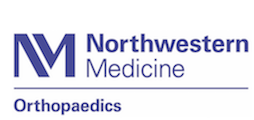|
|

|
« Back
Tell me if my thinking is right here. I have significant degeneration of my neck at the C56 level. I'm thinking if I go with a disc replacement, I could keep as much motion as possible for as long as I can. Then, if it doesn't work or it starts to break down as I get older, I could always have the other option of fusion. Is this a reasonable way to go? Or am I missing something here?
|
|
One of the main concerns after cervical (neck) fusion or disc replacement is the risk of adjacent segment disease (ASD). Adjacent segment disease refers to breakdown of the vertebrae next to a spinal fusion or disc replacement implant.
Studying the causes and ways to avoid adjacent segment disease (ASD) after fusion or disc replacement become a major focus of research these days. But with the ever changing surgical tools and techniques, it is difficult to compare studies from 10 years ago with current studies. And that dilemma will continue into the future as treatment strategies change with evolving technology.
Even so, efforts are being made to study the problem of adjacent segment disease (ASD) and ways to avoid it. Focusing on the causes of the problem may help surgeons identify avoidance strategies.
Currently, there are three known causes of adjacent segment disease. They are: 1) the natural history (what normally happens) in the disc at the next level, 2) the biomechanical stress and increased motion placed on the next level because of the fusion, and 3) anatomical disruption of the vertebral segment at the next level from the surgery.
Available evidence suggests that strategies to avoid ASD seem to be working better for the cervical spine than for the lumbar spine. And ASD may be less likely to develop after disc replacement compared with spinal fusion. This is especially true for younger patients who may be at less risk for degeneration from the natural aging process compared with older adults.
Matching strategies with causes isn't easy. For example, to know for sure if natural history (the natural tendency for the spine to degenerate over time without surgery) is the real problem is difficult to study. Providing needed surgery for one group of patients while comparing them to a control group (those who don't have the surgery) isn't ethical. So the true incidence of ASD linked with natural progression of disc degeneration is likely to remain unknown.
Studying the biomechanical changes at the adjacent levels is a bit easier. Researchers can measure the increased motion at the next vertebral levels and measure the increased pressure on the disc in between the vertebrae.
These kinds of changes are more likely after fusion (because of loss of motion) than with disc replacement where motion is preserved. Determining the exact biomechanical changes that contribute to ASD and finding ways to change that relationship are the focus of many current studies. To date, there has been a wide range of conclusions about this variable. Some studies show that the natural tendency for discs to degenerate over time is the main cause of the problem while others point to the change in biomechanics as the most important factor.
But there's no mistaking the fact that the surgery has an effect as well. Whether fusion or disc replacement, the structures are changed, the normal anatomy is altered, and the result could be aggravation of the adjacent levels. Studies are needed to show what anatomic parts must be preserved and not disrupted during surgery to prevent adjacent segment disease. Likewise, determining technical strategies during the procedure that might help avoid adjacent segmental disease will be important.
Given all the information we have so far, there is nothing wrong with your thinking/strategy. Taking into consideration your age, your surgeon's opinions, your current (and hoped for) activity level, and the pros and cons for each procedure will give you the best guidance in making this important decision.
|
References:
|
|
|
« Back
|
|
|
|
*Disclaimer:*The information contained herein is compiled from a variety of sources. It may not be complete or timely. It does not cover all diseases, physical conditions, ailments or treatments. The information should NOT be used in place of visit with your healthcare provider, nor should you disregard the advice of your health care provider because of any information you read in this topic. |
 | All content provided by eORTHOPOD® is a registered trademark of Mosaic Medical Group, L.L.C.. Content is the sole property of Mosaic Medical Group, LLC and used herein by permission. |
|
